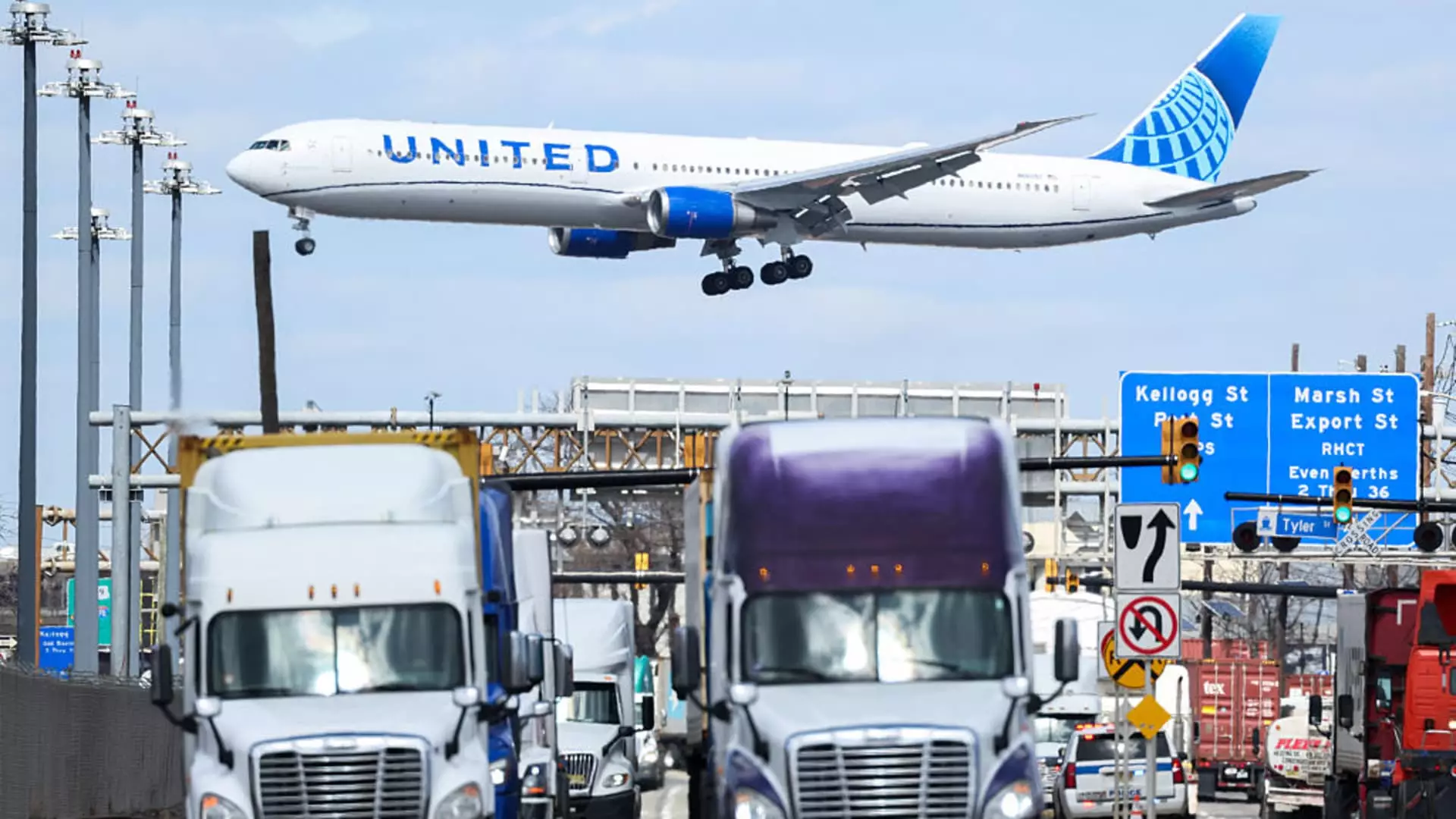United Airlines recently underscored the complexity of forecasting in an unpredictable economy while maintaining its full-year outlook. This dual approach—providing a baseline forecast and a more conservative contingency plan—reflects a pragmatic understanding of the shifting winds in the economic climate. While United anticipates a stable demand for international flights, the emphasis on potential recession-related profitability concerns raises questions about the long-term resilience of domestic travel.
For many, air travel is no longer just about getting from point A to B; it is an experience wrapped in luxury, choice, and consumer expectations. Yet as United has revealed, domestic travel is facing challenges propelled by fluctuating consumer sentiment influenced by macroeconomic factors such as employment rates and inflation. The airline’s strategy to cut domestic flight capacity by 4% illustrates a response not just to lagging demand, but to a broader shift in the airline’s operational focus. While international bookings soar, domestic travelers appear more cautious, a trend that will need watching.
Impact of Recessionary Pressures
With the prospect of a recession looming, United’s attempt to hedge against unpredictable futures by offering dual profit forecasts reflects both mindfulness and fear. By predicting adjusted earnings per share could drop to as low as $7 in a recession, United signals a readiness to adapt, albeit not without acknowledging the challenges ahead. This variable approach hints at the necessity for flexibility and responsiveness in corporate strategy amidst economic turmoil, especially in an industry often criticized for its rigidity.
However, adopting a ‘scared money’ approach is hardly the way to inspire consumer confidence. United Airlines carries an implicit responsibility to project strength, particularly when economic conditions go south. While modesty in forecasting can be seen as prudent management, it borders on a lack of ambition if not aligned with innovative consumer engagement strategies.
Strength in Premium Offerings
Interestingly, the rise in premium bookings by a noteworthy 17% hints at a silver lining for United Airlines. It reflects a consumer willingness to spend more during uncertain economic times, illustrating that not all passengers will retreat to budget options enabled by travel aversion. This shift shows how airlines can cater to an elite segment willing to embrace a choice of luxury and service over standard economy fares. United’s concentration on these higher-value services may be the key to thriving amid uncertainty.
The tactical focus on premium cabins and international travel could be a smart pivot. It illustrates an understanding of market behavior by recognizing that while many may keep their wallets closed, a significant portion will still invest in memorable, high-end experiences. United must take this opportunity to enhance those offerings while ensuring that the perceived value justifies the cost.
Meeting and Exceeding Expectations
The recent first-quarter earnings report showcased an impressive turnaround from a loss into a profitable margin of $387 million. That is substantial progress, yet still below market expectations. Here, the airline’s ability to manage costs while capitalizing on revenue increases remains central to its future positioning. The underwhelming performance regarding unit revenue for domestic flights draws attention, indicating a need for innovative solutions within that sector.
If United Airlines can leverage the knowledge gained from international operations and adequately ramp up domestic offerings accordingly, they may be able to sustain profitability even amidst economic headwinds. By sending a message that they are not only meeting but exceeding the expectations set forth, United could cultivate loyalty among customers during trying times.
A Strategy of Adaptability
Talking to consumers requires honesty and transparency, but more importantly, an adaptive framework that allows for innovations within its service model. As United Airlines forges ahead, they must foster an environment of agile responses to market volatility. Grounding their strategy in solid data analysis while forging new partnerships may yield a robust competitive edge.
Long-term success will not come simply from managing costs or responding to external pressures; it will come from embracing change and driving the airport experience forward. While other airlines may falter or hesitate, United has a unique opportunity to reposition itself as a leader not just in aviation, but in reshaping how consumers experience travel during times of uncertainty.

